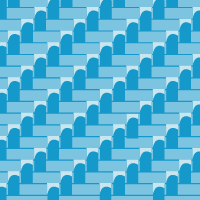Topic Editors


Advanced Composites Manufacturing and Plastics Processing

Topic Information
Dear Colleagues,
Environmental and energy concerns and digitalization are currently profoundly reshaping the plastics and composites industry. Manufacturing processes and systems evolve accordingly in order to cost-effectively produce high-performance, high-quality, lightweight, and multifunctional parts with a reduced carbon footprint. All composites manufacturing and polymer processing technologies are concerned with this trend: liquid composite molding (e.g., resin transfer molding and resin infusion/vacuum infusion), automated lay-up (e.g., automated fiber placement and automated tape laying), filament winding, prepreg technology, pultrusion, autoclave, compression molding, film stacking, additive manufacturing/3D printing, injection molding, over-molding/back-molding, extrusion, blow molding, thermoforming, rotational molding, foaming, coating, preforming of textile reinforcement, joining/welding, and mold technologies (i.e. mold making and design).
This Topical Collection welcomes original research articles, state-of-the-art reviews, or short communications on the latest advances in composites manufacturing and plastics processing. Suggested contributions may address new process developments, modeling/simulation, monitoring/control, and performance or application issues, with either experimental or numerical approaches. All types of polymers (thermoplastics, thermosets, and elastomers) and fibers/fillers (glass, carbon, ceramic, mineral, and vegetal) are eligible, whether they come from recycled, bio-based, or fossil feedstocks. Multidisciplinarity is encouraged to cover emerging topics such as smart manufacturing, artificial intelligence applied to manufacturing, data-driven simulations, and digital twins.
Prof. Dr. Patricia Krawczak
Prof. Dr. Ludwig Cardon
Topic Editors
Keywords
- polymer processing
- composites manufacturing
- joining and welding
- additive manufacturing
- process optimization, modelling, and simulation
- manufacturing technology
- smart manufacturing
- digitalization and Industry 4.0
- thermoplastic polymers and elastomers, thermosetting resins, and plastics
- composite materials
- nanocomposites
- fibers, fillers, and textile reinforcement
Participating Journals
| Journal Name | Impact Factor | CiteScore | Launched Year | First Decision (median) | APC | |
|---|---|---|---|---|---|---|

Fibers
|
3.9 | 7.0 | 2013 | 24.1 Days | CHF 2000 | Submit |

Journal of Composites Science
|
3.3 | 4.5 | 2017 | 14.7 Days | CHF 1800 | Submit |

Journal of Manufacturing and Materials Processing
|
3.2 | 5.5 | 2017 | 14.2 Days | CHF 1800 | Submit |

Materials
|
3.4 | 5.2 | 2008 | 13.9 Days | CHF 2600 | Submit |

Polymers
|
5.0 | 6.6 | 2009 | 13.7 Days | CHF 2700 | Submit |

MDPI Topics is cooperating with Preprints.org and has built a direct connection between MDPI journals and Preprints.org. Authors are encouraged to enjoy the benefits by posting a preprint at Preprints.org prior to publication:
- Immediately share your ideas ahead of publication and establish your research priority;
- Protect your idea from being stolen with this time-stamped preprint article;
- Enhance the exposure and impact of your research;
- Receive feedback from your peers in advance;
- Have it indexed in Web of Science (Preprint Citation Index), Google Scholar, Crossref, SHARE, PrePubMed, Scilit and Europe PMC.

